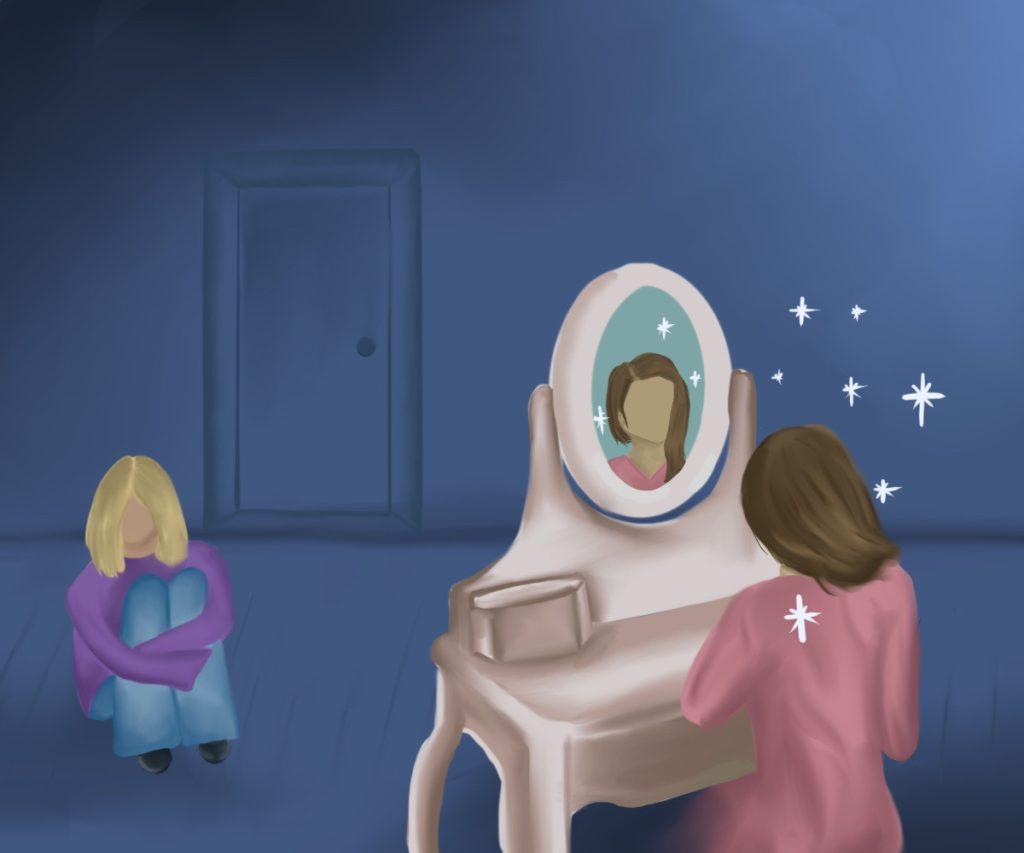
Transparency Item: The Perspectives section of the Graphic is comprised of articles based on opinion. This is the opinion and perspective of the writer.
In the past few decades, the question of who controls the narrative around women in art has been the center of criticism, debate and reform in the creative world. The history of women as the “subject” of art, viewed through the lens of the producer, has implications for societal norms and expectations for women in reality.
One phenomenon that has emerged from the history of women as muses is the “Madonna-whore dichotomy.” This is the idea that the female personality can be reduced to how she fits in with traditional ideas of virtue or purity, and one archetype may be more favorable than the other depending on the situation.
I have found that the derivatives of this concept are prevalent in media. The notion that beauty and intelligence rarely exist in one woman, and the subsequent internal conflicts that women may face as a result, are portrayed in many works of literature and film.
One example is Elena Ferrante’s novel “My Brilliant Friend,” which features two best friends growing up together in Naples, Italy. In childhood, the narrator, Lenù, is the prettiest of the two, while Lila seems to be the titular “brilliant friend,” eclipsing all their classmates with her genius.
However, as the two grow up, Lenù becomes an awkward, insecure teenage girl, finding solace in her studies as she rises to the top of her classes. Lila becomes exceptionally beautiful, drawing both admiration and scathing hatred from the people around her, and abandons all her academic ambitions in favor of an advantageous marriage.
Because Lenù and Lila each have different options in society as a result of their strengths, they each envy each other bitterly. Lila’s social mobility relies on her ability to marry well, but Lenù has the opportunity to get an education and rise upward on her own.
It is not because either girl lacks beauty or intelligence that they take on opposing roles. Rather, the demands of their environment pressure them into these roles.
Lila’s brilliance and brash personality become at odds with her beauty as she grows up, and they begin to put her future in jeopardy as she starts to attract male attention. Even though Lenù knows Lila has been forced into a kind of self-betrayal and is trapped by the opinions of the men around her, she feels as if she lives in the shadow of Lila’s looks.
Though we never see Lila’s perspective directly, it is implied that she also resents when Lenù’s talent and education begin to approach her level. Though Lila has succeeded in her community’s eyes by marrying well, she is facing a dark future in which she has very little agency and will not be free to express herself authentically, inside and outside of her home.
Both of them are extraordinary women who cannot realize their full potential without drawing more judgment than they already do. They are both envious and targets of envy, each wishing to be somebody they are not because there is nothing they can do to please everyone in their environment.
Though I appreciate archetypes for putting order to literature, and sometimes to reality, they are not dependable ways to digest the human condition. “Female nature,” as described by male artists throughout history, is no more dependable than any broad summary of the way people are.
So, we know that artistic paradigms like the Madonna-whore complex are oversimplified depictions of what kind of people women can be, but what does it do to female relationships? Lenù and Lila’s friendship is not healthy, and much of it is motivated by an unspoken desire to see each other beaten in one way or another.
Neither of them has total control over their own lives or self-concepts, but the way they each lack control is different. This fuels their envy against each other, and it may fuel envy in real female friendships.
Comparison against others is a common problem among women and also among female friends. A 2017 study by Fitzsimmons-Craft found that, among the 232 college women who participated, close friends were often the subject of negative physical comparisons.
I am familiar with these dynamics and the ways in which confident women are vulnerable to negative social evaluations. In my experience, intelligent and outspoken women are more readily called “smug” or “annoying,” while women who wear makeup or dress up frequently often have their personal problems dismissed due to the perceived ease of their lives.
In order to combat envy against others and poor self-image, it may be helpful to develop healthier perceptions of human complexity, especially the complexity of women. Placing ourselves and others into inescapable boxes is limiting; nobody is one thing, and often people are made up of elements that contradict each other.
If women confine themselves to these dichotomies, they might always wonder what it’s like to be on the other side. By rejecting these dichotomies, women can instead act as dynamic humans who are free to change and embrace who they are.
___________________________
Follow the Graphic on X: @PeppGraphic
Contact Alyssa Johnson via email: alyssa.johnson@pepperdine.edu
